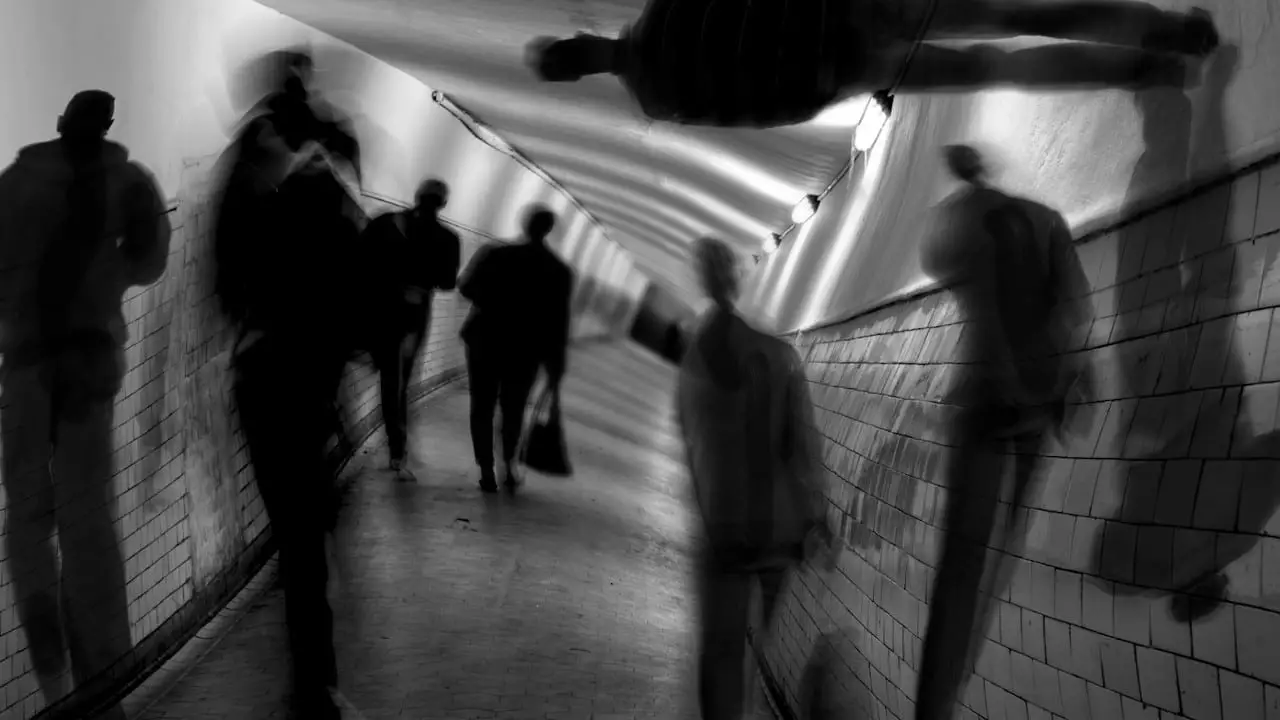According to Statista, social media platforms now have 3.81 billion active users. There is no denying that social media has long since moved beyond novelty and become an essential part of normal everyday lives. With this in mind, here are some of the many ways that social media is turning us all into monsters.
Disclaimer: we know it isn't all bad
Line goes up and that's good for stonks
Social media allows businesses to effectively communicate with customers, increase brand visibility and sales, and humanize their cold corporate machinations with novel takes on memes from half a generation ago.

In fact, social media is key to almost any successful business strategy. Just take a look at this article by Oberlo for examples of killer social media campaigns that businesses have used to promote their brand and boost their bottom line.
But it's mostly bad
Social media has regressed us to very primitive, even worse-r than the original, lynch mobs
Back in the feudal era of lynching (time immemorial--2007), lynch mobs were reactive and had the basic honor system of requiring at least the appearance of commission of a horrible crime before people with pitchforks made other people dangle from trees.
Social media lynch mobs on the other hand are proactive, standing armies of professional lynchers -- and their scouts actively seek out victims 24/7. Not had your bloodlust sated in a while? Then you simply lower the target acquisition standards in a recursive search and destroy loop of guaranteed life ruination.
Related: How Twitter forced us to hate
Social media has gamified lynching, and in this game every dehumanized ape stripped of livelihood and prospects is a match win.
It lets us amplify misleading and false stories on an unprecedented level and we looove it

"A lie can travel halfway around the world before the truth can get its boots on" goes the old maxim, and never has it been more apt. The truth must by its limitations necessarily be a lot more boring than unfettered fantasy, and boring doesn't turn into retweets and shares.
Research into the phenomenon agrees. Researchers from MIT conducted a study on 126,000 verified true and false stories shared on Twitter between 2006 and 2017 and found that the truth vastly underperforms in every measure. For example, it took the truth about six times as long as falsehood to reach 1500 people. “Falsehood diffused significantly farther, faster, deeper, and more broadly than the truth in all categories of information," said the study published in Science.
And the consequences can be horrific. After the April 15, 2013 Boston bombing, viral news items originating from Reddit identified a college student named Sunil Tripathi as the culprit. The accusation had no basis in reality, but "everyone" believed it, and blue checkmarks -- including mainstream media sources like Politico's Dylan Byers, Newsweek's Brian Ries, and NBC's Luke Russert -- helped to add additional social proof to the bogus story. The body of the innocent student was found floating in a river on April 23. His family confirmed it was a suicide.

This type of tragedy also comes in the form of perversion of justice. When 7-year-old girl Jazmine Barnes was killed in a drive-by shooting in 2018, a Black Lives Matter activist named Shaun King tweeted that the shooter must be a white man seen in a red pickup truck, and that the motive must be racist.
King's theory theory -- presented as fact -- got thousands of retweets almost immediately and made international news. Media figures and celebrities jumped on board and $100,000 was raised to catch the red pickup man. Harris County police admitted that they worked closely with Shaun King and that the red pickup man, by now identified as Robert Paul Cantrell, was the suspect.
The actual killer, a black man, was eventually found by pure luck, but it didn't stop the threats against Cantrell and his family. Cantrell committed suicide by hanging himself shortly after telling his lawyer he feared for his family's safety.

It's devolving our communication into simple facial expressions and grunts
Dr. William J. Ward, who is a Social Media professor (exists) at Syracuse University, said it best:
Blogs were one of the earliest forms of social networking where people were writing 1,000 words. When we moved to status updates on Facebook, our posts became shorter. Then micro-blogs like Twitter came along and shortened our updates to 140 characters. Now we are even skipping words altogether and moving towards more visual communication[...].

The fact that the Unicode Standard now contains no less than 3,304 emojis doesn't hurt, either.
We are becoming sickly and neurotic so our outward aesthetics can match our depraved souls

- Stress. Social media use is correlated with higher stress levels in men. "Social media users feel extra pressure to participate and keep up on social media, to avoid the ‘fear of missing out’ [FOMO] in activities that others share."
- Insecurity. Mainlining reams of baby arrivals, job promotions, and perfect selfies is a constant reminder of what's not going on in your own life at any particular point in time (which is most of the time).
- Depression. A study published in the Journal of Social and Clinical Psychology concludes that there is a causal link between the use of social media and negative effects on well-being, primarily depression and loneliness..
- Not enough sleep. Researchers have found that using social media for as little as one hour a day seriously affects the amount of sleep you're statistically likely to get. The chances you're not getting enough sleep increase dramatically the more time your spend on social media.
We have been reduced to rats in a horrific Skinner box

Science fiction predictions for the social internet and our future within it often involved 3d headset wearing cybernauts frolicking (and doing sick combat) in mad Second Life type 3d worlds. The truth of our far future, we discovered, is that all the brain requires in order to dole out the dopamine is a random supply of the text "[someone] liked this."
[N]owhere is dopamine more routinely name-dropped than in Silicon Valley, where it is hailed as the secret sauce that makes an app, game or social platform “sticky” – the investor term for “potentially profitable”.
In a 2017 article titled “How evil is tech?”, the New York Times columnist David Brooks wrote: “Tech companies understand what causes dopamine surges in the brain and they lace their products with ‘hijacking techniques’ that lure us in and create ‘compulsion loops’.” Most social media sites create irregularly timed rewards, Brooks wrote, a technique long employed by the makers of slot machines, based on the work of the American psychologist BF Skinner, who found that the strongest way to reinforce a learned behaviour in rats is to reward it on a random schedule. “When a gambler feels favoured by luck, dopamine is released,” says Natasha Schüll, a professor at New York University and author of Addiction By Design: Machine Gambling in Las Vegas. This is the secret to Facebook’s era-defining success: we compulsively check the site because we never know when the delicious ting of social affirmation may sound.
And a powerful dopamine hit it is. The average user spends roughly 136 minutes a day on social media networks, and yes, this is a dystopia.



It really is turning us all into spiteful little demons, just look at twitter!!
Just you wait. Soon, there'll be newer and more "generous" sites - Steemit, Twetch, Gab, Minds, and so on - to replace the already dated FB, Tweetwat, What(TF)sapo, etc. and wreck even more havoc.
In case that doesn't work, corporate will craft newer far more flexible and powerful (e.g. smart glass) devices to further draft the planet into a total, severely boring dystopia.
The Matrix is real
word